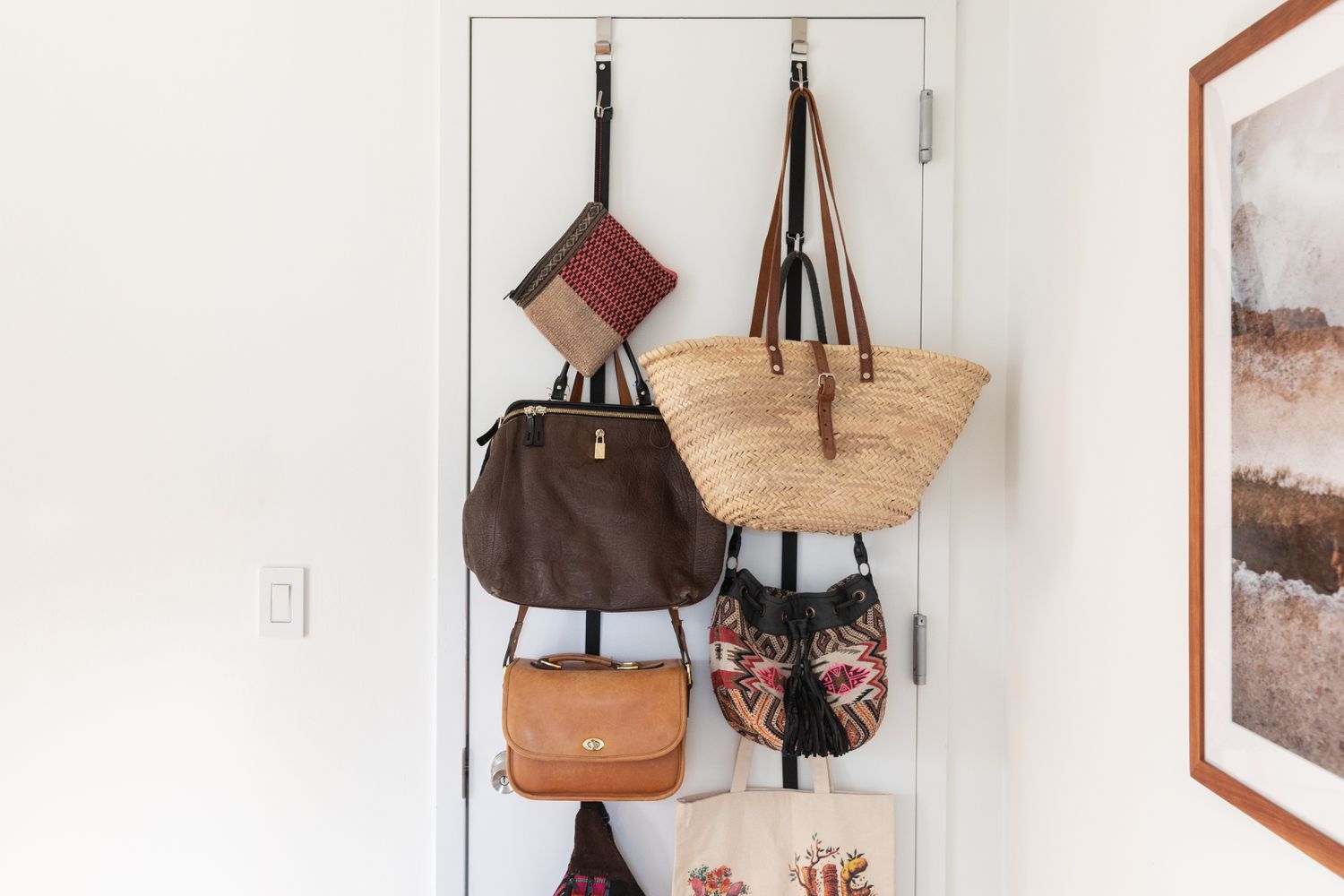

Articles
How To Store Bags And Purses
Modified: March 3, 2024
Discover top tips and tricks for storing bags and purses in this informative articles. Keep your accessories organized and preserved for longer!
(Many of the links in this article redirect to a specific reviewed product. Your purchase of these products through affiliate links helps to generate commission for Storables.com, at no extra cost. Learn more)
Introduction
Welcome to the ultimate guide on how to store bags and purses! If you’re a bag aficionado or simply someone who appreciates a well-organized space, you’ve come to the right place. Properly storing your bags and purses not only keeps them in excellent condition but also allows you to easily find and access your favorite pieces whenever you need them.
Assessing your storage needs is the first step in creating an efficient and organized system. Take a moment to evaluate the number and types of bags and purses you own. Are they primarily handbags, tote bags, or clutches? Do you have a collection of designer bags that require special care? Understanding your storage needs will guide you in selecting the most suitable solutions.
Before placing your bags in storage, it’s crucial to clean and prepare them properly. Start by emptying out the contents of each bag, removing any debris or loose items. Use a soft brush or cloth to gently remove any dust or dirt from the exterior and interior. For leather or fabric bags, you may need to use specific cleaning products or consult a professional for guidance.
Once your bags are clean, it’s time to select the right storage solutions. Hanging storage options such as hooks or closet rod organizers are ideal for larger purses and totes. Not only do they maximize space, but they also allow your bags to maintain their shape. If hanging storage isn’t an option, consider shelf and drawer storage methods. Place your bags on sturdy shelves or use dividers to keep them upright and prevent them from collapsing.
To protect your bags and purses from dust and potential damage, invest in protective covers and dust bags. These covers provide an extra layer of defense against elements that could harm your bags, such as sunlight and moisture. If you don’t have access to specific covers, you can also use cotton pillowcases or fabric bags to store your precious pieces.
Key Takeaways:
- Assess your storage needs based on the types and number of bags you own to determine the most suitable storage solutions and ensure efficient organization.
- Properly store and maintain your bags by utilizing the right storage solutions, organizing purse contents, and maintaining handbag storage to preserve their beauty and longevity.
Read more: How To Store Purses In A Closet
Assessing Storage Needs
When it comes to storing bags and purses, it’s important to assess your storage needs based on the number and types of bags you own. This will help you determine the best storage solutions and ensure that your bags are properly cared for.
Start by taking inventory of your bag collection. Categorize them based on size, shape, and usage. Do you have a variety of handbags, shoulder bags, tote bags, or clutches? Are there any delicate or designer bags that require special attention?
Consider the number of bags you have in each category. If you own a large collection of bags, you may need to allocate more space for storage. On the other hand, if you have a smaller collection, you can make use of compact storage solutions.
Next, think about the frequency of use for each bag. Some bags are meant for everyday use, while others are reserved for special occasions or seasonal events. If you have seasonal bags, you may need to store them separately and rotate their usage throughout the year.
Assess your storage space and determine the most suitable area for bag storage. If you have a spacious closet or a designated storage room, you can dedicate a section solely for your bags. If space is limited, you may need to get creative and utilize under-bed storage, over-the-door organizers, or even repurpose existing furniture.
Consider the environment in which your bags will be stored. Bags, especially those made from delicate materials like leather, suede, or fabric, are vulnerable to humidity, sunlight, and temperature fluctuations. Ensure that your storage area is well-ventilated and protected from direct sunlight to prevent any potential damage.
By assessing your storage needs, you can create an efficient and practical bag storage system. This will not only keep your bags organized but also extend their lifespan and maintain their pristine condition. So take the time to evaluate your collection and plan your storage strategy accordingly.
Cleaning and Preparing Bags and Purses
Before storing your bags and purses, it’s crucial to give them a thorough cleaning and preparation. This ensures that your bags are in their best condition and ready to be stored for an extended period. Follow these steps to properly clean and prepare your bags:
1. Empty out the contents: Start by emptying out the contents of each bag. Remove any loose items, such as receipts, gum wrappers, or stray coins. This will prevent any unwanted debris from damaging the interior of your bags during storage.
2. Gently remove dust and dirt: Use a soft brush or cloth to gently remove any dust or dirt from both the exterior and interior of your bags. Be cautious when cleaning sensitive materials like leather or fabric, and use appropriate cleaning products or methods recommended for each material.
3. Address stains or spills: If you notice any stains or spills on your bags, take immediate action to clean them. Follow the manufacturer’s instructions for spot-treating specific stains or consult a professional cleaner for guidance. It’s crucial to address these stains before storing your bags to prevent them from setting or spreading.
4. Condition leather bags: If you have leather bags, consider applying a leather conditioner to keep the material moisturized and protected. This helps prevent cracking or drying out of the leather over time. Use a product specifically designed for leather and follow the instructions for application.
5. Air out your bags: Allow your bags to air out for a few hours before storing them. This helps eliminate any lingering odors and ensures that your bags are fresh and ready for long-term storage.
6. Stuff bags for shape maintenance: To help your bags retain their shape, stuff them with acid-free tissue paper or bubble wrap. Avoid using newspaper or colored paper, as the ink may transfer onto the bag. This step is particularly important for structured bags or delicate materials like suede or fabric.
7. Fasten closures and secure straps: Before storing your bags, make sure to fasten any closures, such as zippers or clasps, and secure any straps or handles. This prevents strain on the bag and keeps everything neatly in place during storage.
By following these cleaning and preparation steps, you can ensure that your bags and purses are well-maintained and protected during storage. Taking the time to properly clean and prepare your bags will help them maintain their beauty and extend their longevity for years to come.
Selecting the Right Storage Solutions
When it comes to storing bags and purses, selecting the right storage solutions is key to keeping them organized, easily accessible, and in excellent condition. Consider the following factors to determine the best storage options for your collection:
1. Hanging storage options: Hanging storage solutions are ideal for larger handbags, tote bags, or shoulder bags. Install hooks or use closet rod organizers to hang your bags. This not only maximizes space but also helps maintain the shape of your bags. Choose hooks or organizers that can support the weight of your bags without causing damage or strain.
2. Shelf and drawer storage methods: If you have space available on shelves or in drawers, consider using dividers or organizers to keep your bags upright and prevent them from collapsing. Place them side by side or stack them neatly, making sure not to overcrowd the space. Adjustable shelf dividers or stackable organizers can provide flexibility and customization based on the size and shape of your bags.
3. Protective covers and dust bags: To protect your bags from dust, sunlight, and potential damage, invest in protective covers or dust bags. These covers provide an additional layer of protection and help preserve the quality of your bags. Opt for covers made from breathable materials like cotton or canvas to allow air circulation and prevent moisture buildup.
4. Utilizing wall hooks and racks: If floor or closet space is limited, utilize wall hooks or racks to hang your bags. Install hooks near your entryway for easy access to everyday bags or in your dressing area for frequently used purses. Wall-mounted racks with slots or hooks can also serve as a stylish and functional display for your bag collection.
5. Storing seasonal and occasional bags: If you have seasonal or occasional bags that you only use during specific times or events, consider storing them separately. Utilize under-bed storage containers or dedicated storage boxes to keep these bags safe and easily accessible. Label each container or box for easy identification when you need to switch out your bags.
6. Organizing purse contents: Alongside storing your bags, it’s essential to organize the contents of your purses. Use smaller pouches or compartments within your bags to hold essentials like keys, wallets, or makeup. This makes it easier to switch between bags and ensures that your items are kept in order.
7. Maintaining handbag and purse storage: Regularly inspect your storage area to ensure it remains clean, dry, and free from dust. Avoid placing bags in direct sunlight to prevent color fading or material damage. Rotate your bags occasionally to prevent prolonged pressure on one specific bag.
By selecting the right storage solutions based on your collection and space availability, you can maintain an organized and functional system for storing your bags and purses. Remember, proper storage not only keeps your bags in pristine condition but also allows you to enjoy and appreciate your collection effortlessly.
Hanging Storage Options
Hanging storage options are a popular choice for storing bags and purses, as they provide an efficient and space-saving solution. Whether you have a large collection of handbags, tote bags, or shoulder bags, utilizing hooks or closet rod organizers can help keep your bags organized and easily accessible. Here are a few hanging storage options to consider:
1. Hook hangers: Hook hangers are a simple and versatile solution for hanging bags. Install individual hooks onto a wall or the back of a closet door, allowing you to hang your bags vertically. This method is especially useful for small spaces or when you have a limited number of bags to store. Opt for sturdy hooks that can support the weight of your bags without causing damage to the straps or handles.
2. Over-the-door organizers: Over-the-door organizers with pockets or clear plastic compartments are an excellent choice for storing smaller bags or accessories. These organizers hang over the back of a door, providing easy access to your collection. Sort your bags by style or color and store them in individual pockets, making it convenient to find the perfect bag for any occasion. Over-the-door organizers are also great for utilizing empty space in your closet or bedroom.
3. Closet rod organizers: Closet rod organizers specifically designed for storing bags are a convenient and efficient option. These organizers typically feature multiple hooks or loops attached to a hanger, allowing you to hang several bags in a single unit. You can find organizers in various sizes and configurations to accommodate different bag styles and sizes. Closet rod organizers keep your bags neatly in one place, ensuring they maintain their shape and are easily accessible.
4. Wall-mounted racks: Wall-mounted racks with hooks or slots can serve as a stylish display for your bag collection. These racks can be installed on a wall in your dressing area, hallway, or even a bedroom. They not only provide storage but also add a decorative element to your space. You can hang bags by their handles or use S-hooks to hang them on the slots or bars of the rack. Make sure the rack is securely attached to the wall and can support the weight of your bags.
When using hanging storage options, it’s important to consider the weight and size of your bags. Avoid overcrowding the hooks or racks to prevent strain on the bags or potential damage. Regularly inspect and adjust the hooks or hangers to ensure they are secure and sturdy.
By utilizing hanging storage options, you can efficiently store and display your bag collection while saving valuable space. This allows you to easily find and access your bags, making outfit selection a breeze. Whether you opt for hook hangers, over-the-door organizers, closet rod organizers, or wall-mounted racks, choose a solution that suits your needs and complements your space.
Read more: How To Store My Purses
Shelf and Drawer Storage Methods
Shelf and drawer storage methods are practical and efficient solutions for organizing and storing bags and purses. These methods not only keep your collection easily accessible but also help maintain the shape and condition of your bags. Here are some shelf and drawer storage methods to consider:
1. Adjustable shelving: Utilize adjustable shelves to create customized storage for your bags. Measure the height and width of your bags to determine the ideal spacing between shelves. Place your bags side by side, either in a standing position or laid flat, depending on their size and shape. Adjustable shelves allow you to accommodate different bag styles and sizes easily.
2. Dividers or bins: Use dividers or fabric bins to separate and organize your bags on shelves. Dividers can be inserted vertically or horizontally between bags to keep them neatly separated. This is especially useful if you have bags of different sizes or want to prevent them from toppling over or losing their shape. Fabric bins with handles are also a great option for storing smaller bags or clutches.
3. Drawer inserts or organizers: If you have drawers available, invest in drawer inserts or organizers specifically designed for bag storage. These inserts often feature compartments or dividers that keep your bags upright and prevent them from shifting or getting tangled. Sort your bags by style or color within each compartment, making it easy to find the perfect bag for any outfit.
4. Clear storage boxes: Clear storage boxes are a popular choice for bag storage as they provide visibility and protection. Place your bags in these boxes, ensuring that they are clean and stuffed with tissue paper or bubble wrap to retain their shape. Label each box with the type or style of bags stored inside, allowing for easy identification when selecting a bag for an occasion.
5. Vertical shelving units: Vertical shelving units are a convenient option if you have limited space or want to make use of wall space. These units typically consist of multiple shelves or compartments stacked vertically, providing ample storage for your bags. Place your bags on the shelves, with larger bags at the bottom and smaller ones at the top for easy access and organization.
Remember to inspect your shelves or drawers regularly to ensure they are sturdy and can support the weight of your bags. Avoid overcrowding or stacking too many bags on top of one another to prevent any damage or distortion. If possible, position your shelves or drawer storage away from direct sunlight to prevent color fading or material deterioration.
By utilizing shelf and drawer storage methods, you can effectively organize and protect your bag collection. Whether you choose adjustable shelving, drawer inserts, or clear storage boxes, these methods will keep your bags accessible and in excellent condition. Take the time to properly arrange and categorize your bags to create a functional and visually appealing storage system.
Store bags and purses in a cool, dry place away from direct sunlight to prevent fading and damage. Use dust bags or pillowcases to protect them from dust and scratches.
Protective Covers and Dust Bags
To protect your bags and purses from dust, sunlight, and potential damage, it’s essential to use protective covers and dust bags during storage. These simple yet effective solutions provide an additional layer of defense, preserving the quality and longevity of your beloved bags. Here’s why you should invest in protective covers and dust bags:
1. Shield against dust and dirt: Over time, dust and dirt can accumulate on the surface and inside of your bags, potentially causing damage and discoloration. Protective covers and dust bags act as a barrier, preventing dust particles from settling onto your bags. This helps keep them clean and minimizes the need for frequent cleaning and maintenance.
2. Prevent scratches and scuffs: Bags made of delicate materials like leather, suede, or fabric are prone to scratches and scuffs. Using protective covers and dust bags safeguards your bags from incidental contact with other objects. The soft and smooth interior of the covers and bags cushion your bags, preventing scratches and maintaining their pristine appearance.
3. Preserve color and material integrity: Exposure to sunlight can cause color fading and material deterioration. Protective covers and dust bags shield your bags from sunlight and UV rays, thereby preserving their original color and preventing any damage or discoloration over time. This is particularly crucial for bags with vibrant or light-colored materials.
4. Maintain shape and structure: Bags, especially structured ones, can lose their shape when not properly stored. Dust bags are typically designed to accommodate the shape of specific bag styles, helping them retain their structure. The covers and bags help prevent creases, folds, or deformation, keeping your bags looking their best.
5. Aid in moisture control: Excessive moisture can ruin leather or fabric bags, leading to mold or mildew growth. Protective covers and dust bags made from breathable materials like cotton or canvas help control moisture by allowing air circulation. This reduces the risk of moisture buildup and helps preserve the integrity of your bags.
6. Convenient storage and organization: Keeping your bags in protective covers or dust bags not only offers protection but also makes storage and organization easier. The covers and bags can be labeled or color-coded, allowing you to quickly identify and retrieve the bag you need. They also help keep your storage space tidy and clutter-free.
If you don’t have access to specific covers or dust bags, you can alternately use cotton pillowcases or fabric bags to store your bags. Just ensure that they are clean and made from breathable materials to achieve the desired protection.
Investing in protective covers and dust bags is a wise choice to safeguard your bags during storage. By using these simple yet effective solutions, you can extend the life of your bags and enjoy them for years to come. Shield your bags from dust, scratches, light, and moisture, and keep them safe and beautifully preserved.
Utilizing Wall Hooks and Racks
When it comes to storing bags and purses, utilizing wall hooks and racks provides both a functional storage solution and an opportunity to showcase your collection. Wall hooks and racks offer easy access to your bags while utilizing vertical space efficiently. Here’s how you can effectively utilize wall hooks and racks for bag storage:
1. Install sturdy wall hooks: Start by installing sturdy wall hooks on a wall in your dressing area, bedroom, or closet. Make sure to choose hooks that can support the weight of your bags without causing any damage or strain. Space the hooks apart adequately to accommodate the size and shape of your bags, allowing enough room for easy retrieval.
2. Hang bags by their handles: Hang your bags by their handles on the wall hooks. Ensure that the handles are securely fastened, and the bags are properly balanced. Hanging bags by their handles helps maintain their shape and prevents unnecessary creasing or bending.
3. Utilize S-hooks or carabiners: To maximize storage space and hang multiple bags, consider using S-hooks or small carabiners. Attach the S-hook or carabiner to the main hook, allowing you to hang multiple bags from a single hook. This is particularly useful for smaller or lighter bags that can be grouped together.
4. Opt for decorative wall-mounted racks: If wall hooks don’t blend well with your aesthetic, consider using decorative wall-mounted racks. These racks often feature slots or bars where you can hang your bags. Choose a rack design that complements your space and adds a stylish touch to your bag display. Wall-mounted racks not only provide storage but also serve as an attractive visual element.
5. Arrange bags by style or color: Organize your bags on the wall hooks or racks in a way that makes sense to you. You can arrange them by style, such as organizing all shoulder bags together or grouping clutches in one area. Alternatively, you can sort them by color, creating a visually pleasing display that adds a pop of color to your space.
6. Label or tag bags for easy identification: For convenience, you can label or tag your bags to make them easily identifiable. Attach small tags or labels with the bag’s name or a brief description. This way, you can quickly locate the bag you need without needing to inspect each one individually.
7. Regularly inspect and maintain: Regularly inspect your wall hooks or racks to ensure they remain securely attached to the wall. Check for any signs of wear or damage and make any necessary adjustments or repairs. Additionally, dust and clean the wall hooks or racks periodically to keep them looking their best.
Utilizing wall hooks and racks not only provides efficient storage for your bags but also serves as an attractive display that adds personality to your space. Whether you opt for simple wall hooks or decorative wall-mounted racks, take advantage of vertical space and create a visually appealing storage solution for your bag collection.
Storing Seasonal and Occasional Bags
Seasonal and occasional bags, such as those reserved for specific events or time periods, require special consideration when it comes to storage. Properly storing these bags ensures that they remain in excellent condition and are ready to be used when needed. Here are some tips for storing seasonal and occasional bags:
1. Separate and categorize: Start by separating your seasonal and occasional bags from your regular collection. This allows you to focus specifically on the bags that are used less frequently and need to be stored separately. Categorize your bags based on the seasons or occasions for which they are intended.
2. Clean and prepare: Before storing your bags, make sure they are clean and free from any dust, stains, or spills. Follow the cleaning and preparation steps mentioned earlier in this guide to ensure that your bags are in their best condition before being stored away. Address any stains or spills promptly to prevent them from setting or causing further damage.
3. Stuff and shape maintenance: To help your seasonal and occasional bags maintain their shape, stuff them with acid-free tissue paper or bubble wrap. This will prevent any creasing or collapsing of the bag over time. Pay extra attention to structured bags or bags made from delicate materials such as suede or fabric.
4. Store in appropriate containers: Invest in storage containers specifically designed for bag storage. These containers should provide protection from dust, moisture, and potential damage. Clear containers are ideal as they allow you to easily see the contents without needing to open them. Label each container with the season or occasion for which the bags are intended, ensuring easy identification.
5. Consider temperature and humidity: Ensure that the storage area for your seasonal and occasional bags maintains optimal temperature and humidity levels. Extreme heat or cold can damage bags made from delicate materials. Similarly, high humidity can lead to mold or mildew growth. Choose a storage location that is cool, dry, and well-ventilated to preserve the quality of your bags.
6. Rotate usage: If you have a large collection of seasonal bags, consider rotating their usage throughout the year. This helps prevent any single bag from being stored for an extended period and allows you to enjoy and appreciate each piece. Make a note of the rotation schedule to ensure that each bag has its fair chance to be used and enjoyed.
7. Periodic inspection: Even when in storage, periodically inspect your seasonal and occasional bags to ensure they remain in good condition. Check for any signs of damage, discoloration, or pest infestation. If necessary, take appropriate steps to address any issues and make any needed repairs or cleaning.
By taking the extra time and care to properly store your seasonal and occasional bags, you can ensure that they remain pristine and ready to be used whenever the appropriate time comes. With proper storage, you can extend the lifespan of your bags and enjoy them for many seasons and occasions to come.
Read more: How To Store Your Purses
Organizing Purse Contents
Organizing the contents of your purse is just as important as storing the bags themselves. A well-organized purse makes it easier to find items quickly and prevents your bag from becoming cluttered and messy. Here are some tips for effectively organizing the contents of your purse:
1. Use smaller pouches or organizers: Invest in smaller pouches or organizers to group similar items together within your purse. This helps prevent them from getting lost or tangled with other items. Consider using pouches for items like keys, pens, lip balm, and loose change. Having designated pouches for specific items makes it easier to locate them when needed.
2. Sort items by category: Categorize the items in your purse based on their function or type. For example, keep all your personal hygiene items in one pouch, electronic accessories in another, and makeup in a separate pouch. Sorting items by category ensures that everything has its designated place and makes it easier to find what you need without rummaging through your bag.
3. Use pockets and compartments: Take advantage of any pockets or compartments within your purse. Larger pockets can hold items like wallets or notebooks, while smaller compartments can store items like keys or earphones. Assign each pocket or compartment for a specific item, so you know exactly where to find it when you need it.
4. Minimize unnecessary items: Regularly declutter your purse to remove any unnecessary items that accumulate over time. Keep only the essentials to prevent your bag from becoming unnecessarily heavy or cluttered. Make it a habit to clean out your purse at least once a week and remove any items that you no longer need or use.
5. Keep important items easily accessible: Place frequently used or essential items in easily accessible pockets or compartments. This includes your phone, keys, or wallet. By keeping these items in the same designated spot, you can quickly retrieve them when necessary without searching through the entire contents of your purse.
6. Consider using a purse organizer insert: If you frequently switch between different bags, consider using a purse organizer insert. These inserts come with various compartments and pockets to help keep your items organized and easily transferable from one bag to another. They also provide additional structure and stability to your bag, helping it maintain its shape.
7. Maintain organization regularly: Make it a habit to regularly maintain the organization of your purse. Take a few moments each day to reorganize any items that may have shifted or become disorganized. By doing so, you can ensure that your purse remains neat and clutter-free.
By implementing these organizing strategies, you can transform your purse into an efficient and clutter-free space. Not only will this save you time and frustration when searching for items, but it will also help prolong the longevity of your purse by preventing damage from items bouncing around or getting tangled. Stay organized and enjoy the convenience of a well-structured purse!
Maintaining Handbag and Purse Storage
Maintaining the storage of your handbags and purses is crucial to ensure their longevity and keep them looking their best. By following proper maintenance practices, you can preserve the condition and quality of your bags for years to come. Here are some tips for maintaining handbag and purse storage:
1. Regular cleaning: Clean your bags regularly to remove any dust, dirt, or stains that may have accumulated over time. Use a soft brush or cloth to gently clean the exterior and interior of your bags. For specific materials, such as leather or fabric, use appropriate cleaning products or consult a professional for guidance. Regular cleaning prevents dirt from settling and potentially causing damage to your bags.
2. Avoid overstuffing: Avoid overstuffing your bags, as this can strain the structure and cause unnecessary creasing or stretching of the materials. Only carry essentials and distribute the weight evenly throughout the bag. Overstuffing can also increase the risk of items getting damaged or lost within the bag.
3. Store in a cool, dry place: Choose a storage area that is cool, dry, and well-ventilated to prevent any moisture buildup inside your bags. Moisture can lead to mold or mildew growth, especially in bags made from natural materials like leather or fabric. Avoid storing your bags in areas prone to high humidity or extreme temperature fluctuations.
4. Rotate bag usage: Rotate the usage of your bags regularly to prevent any single bag from being stored for extended periods. Using different bags allows you to evenly distribute the wear and tear among your collection. Regularly rotating your bags also gives you the opportunity to enjoy and appreciate each one.
5. Handle with care: Handle your bags with care to prevent any unnecessary damage. Avoid placing them on rough or dirty surfaces, and be mindful of sharp objects or rough edges that could scratch or snag the materials. Treat your bags gently to maintain their original condition.
6. Check for signs of damage: Regularly inspect your bags for any signs of damage, such as loose stitching, worn-out straps, or hardware issues. Address any damage promptly to prevent it from worsening. For significant repairs, consider consulting a professional bag repair service to ensure proper restoration.
7. Store bags in protective covers or dust bags: When your bags are not in use, store them in protective covers or dust bags to shield them from dust, sunlight, and potential damage. These covers provide an extra layer of protection for your bags while keeping them neatly organized. If you don’t have specific covers, cotton pillowcases or fabric bags can also serve as a makeshift solution.
8. Avoid direct sunlight: Prolonged exposure to direct sunlight can cause color fading or material damage. Store your bags away from windows or any areas where they will be exposed to direct sunlight. If possible, use blinds or curtains to block out sunlight in the storage area.
By following these maintenance practices, you can ensure that your handbags and purses remain in excellent condition for years to come. Proper cleaning, gentle handling, and thoughtful storage will help preserve the beauty and longevity of your beloved bags. Take care of your collection, and it will continue to bring you joy and style for years to come.
Conclusion
Properly storing and maintaining your bags and purses is essential for preserving their beauty, functionality, and longevity. By implementing the right storage solutions and following maintenance practices, you can ensure that your collection remains organized, easily accessible, and in excellent condition. Here are the key takeaways to consider:
Assess your storage needs based on the types and number of bags you own. This will help you determine the most suitable storage solutions and ensure efficient organization.
Before storing your bags, clean and prepare them properly. Remove any debris, gently clean the exterior and interior, and address any stains or spills promptly.
Selecting the right storage solutions is key. Consider hanging storage options like hooks or closet rod organizers, as well as shelf and drawer storage methods. Utilize protective covers, dust bags, and wall hooks or racks to safeguard and showcase your bags.
When storing seasonal or occasional bags, separate them from your regular collection, clean and prepare them, and store them in appropriate containers. Rotate their usage to evenly distribute wear and tear.
Organize the contents of your purse by using smaller pouches or organizers, sorting items by category, and keeping important items easily accessible. Regularly declutter and maintain the organization of your purse.
Maintain the storage of your bags by regularly cleaning them, avoiding overstuffing, storing them in a cool and dry place, rotating their usage, handling them with care, and using protective covers or dust bags.
In conclusion, proper storage and maintenance of your bags and purses not only helps keep them in excellent condition but also allows for easy access and enjoyment of your collection. By applying the tips and techniques outlined in this guide, you can ensure that your bags remain organized, protected, and ready to elevate your style for years to come.
Frequently Asked Questions about How To Store Bags And Purses
Was this page helpful?
At Storables.com, we guarantee accurate and reliable information. Our content, validated by Expert Board Contributors, is crafted following stringent Editorial Policies. We're committed to providing you with well-researched, expert-backed insights for all your informational needs.
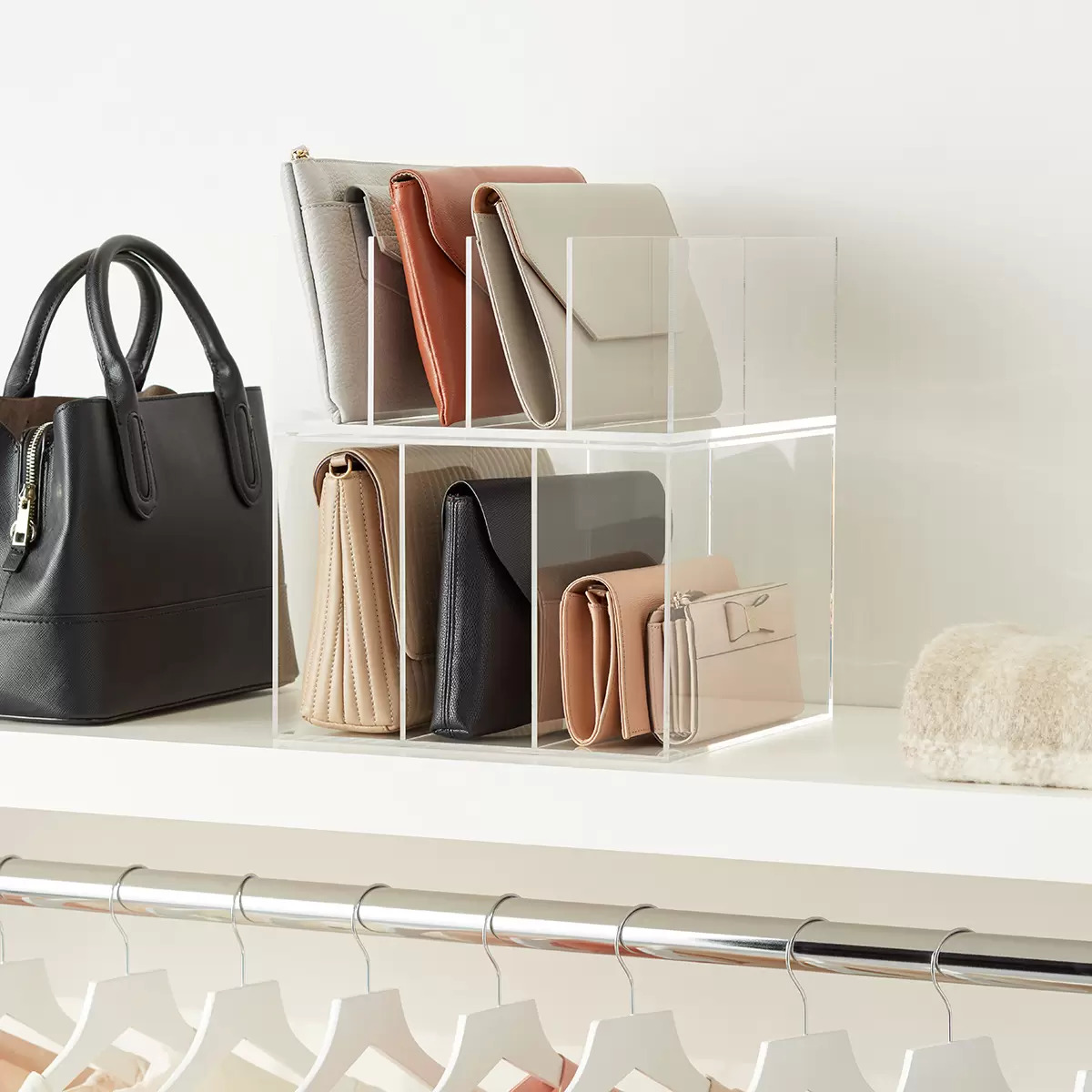
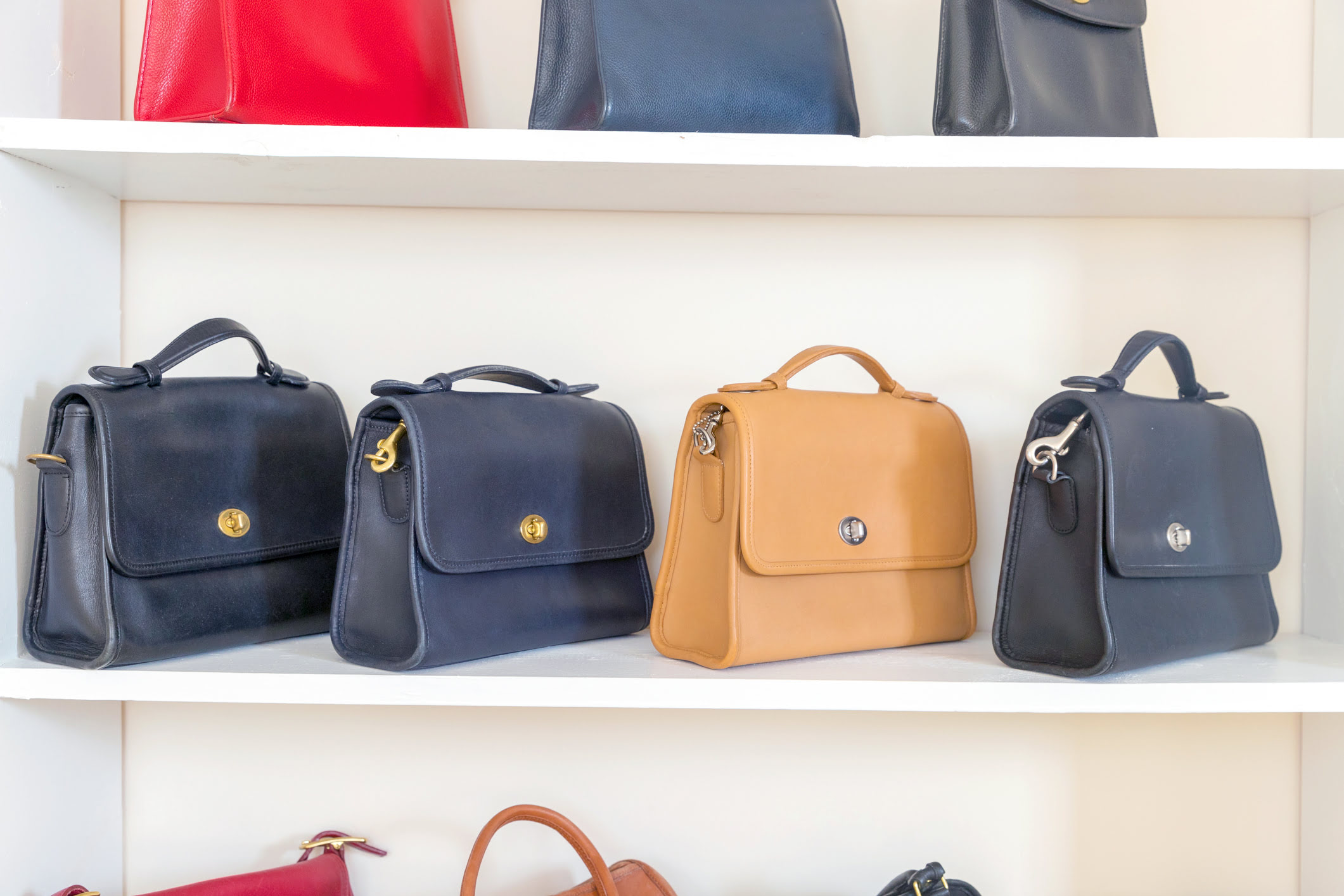
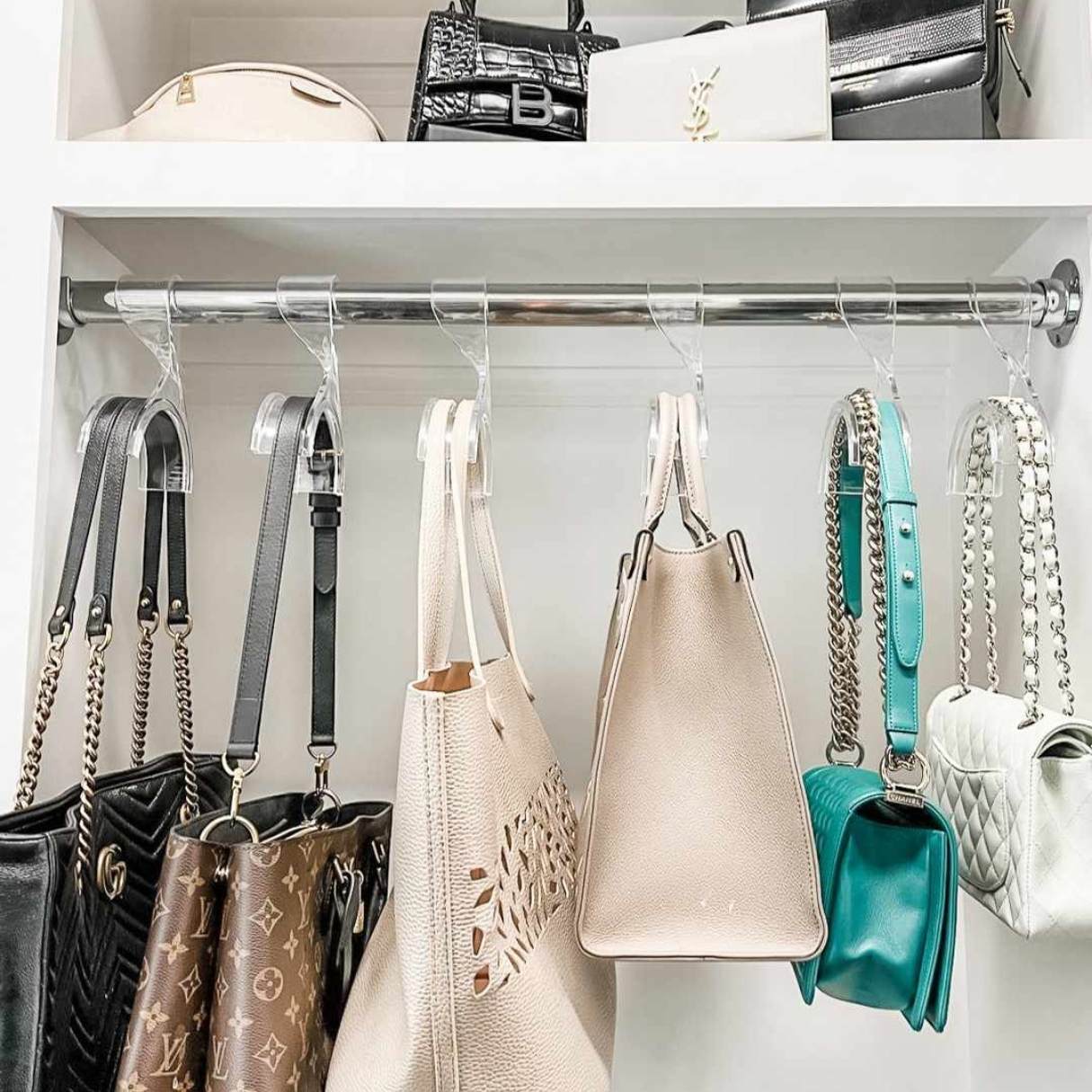
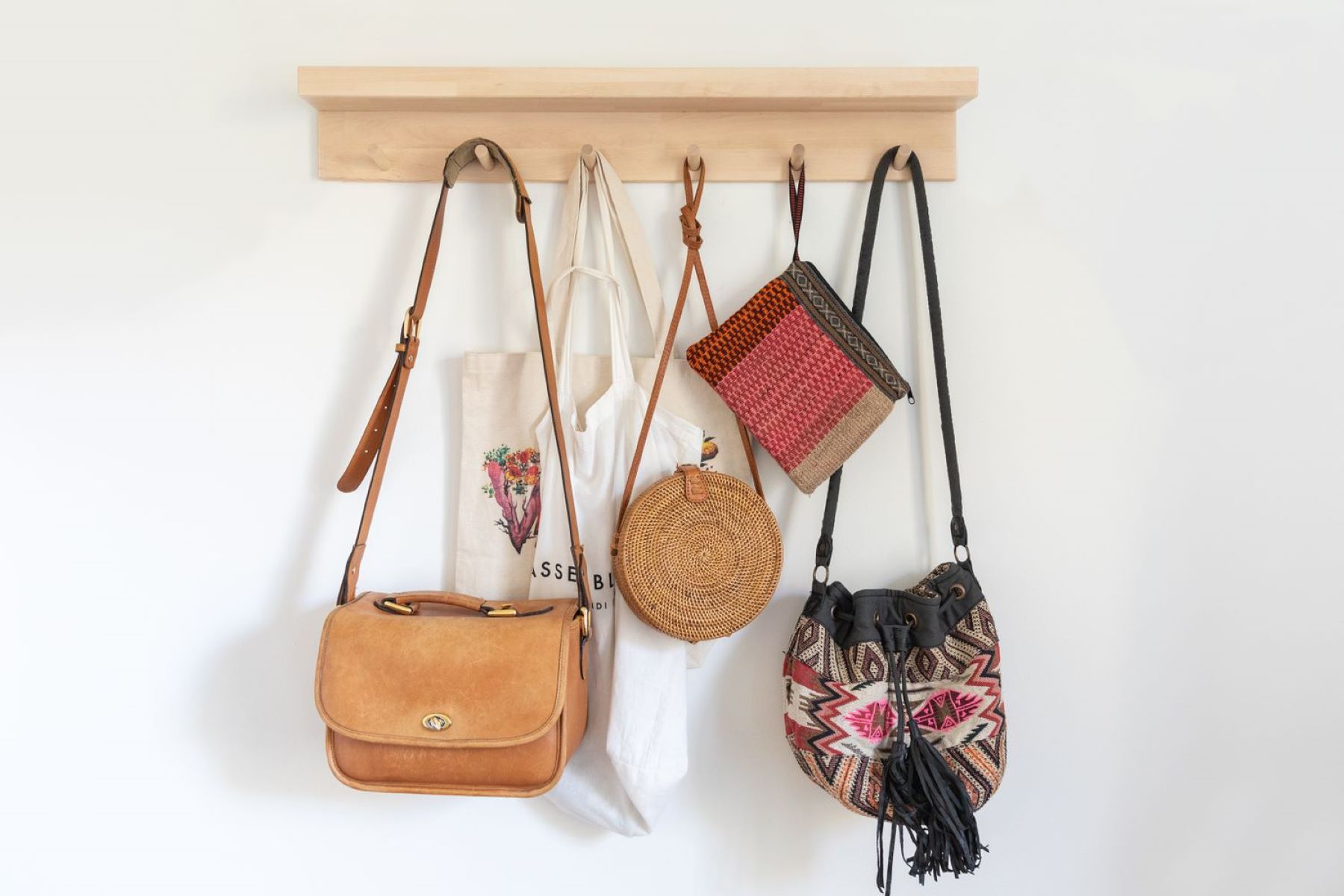
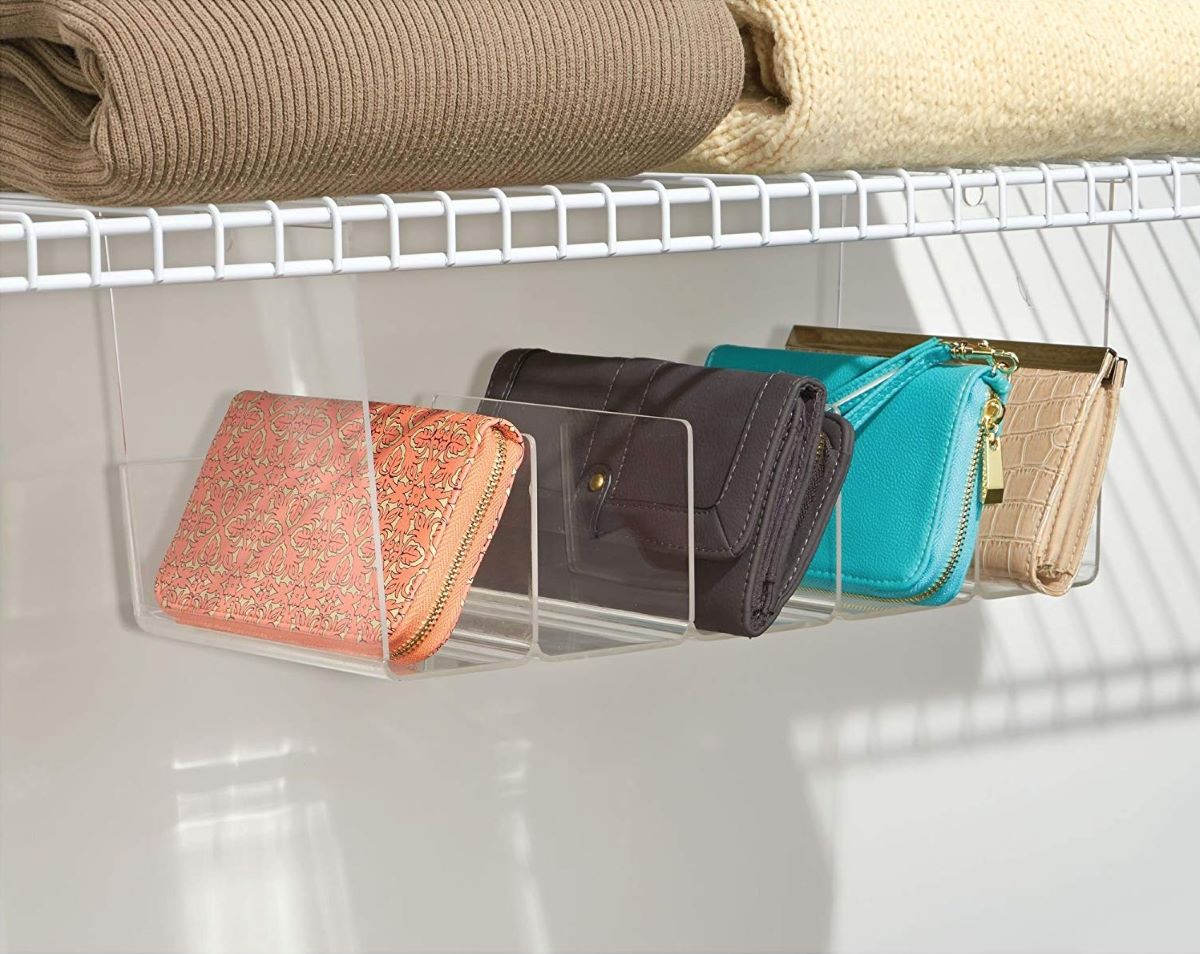
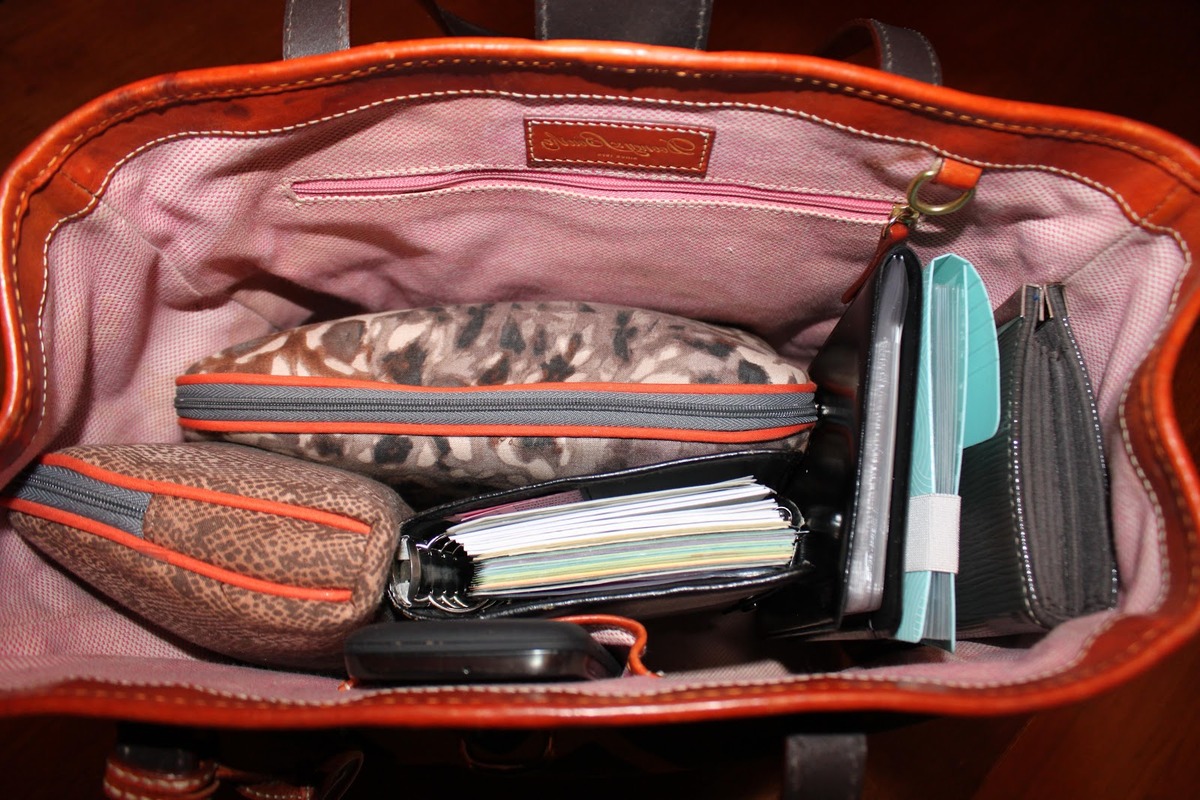
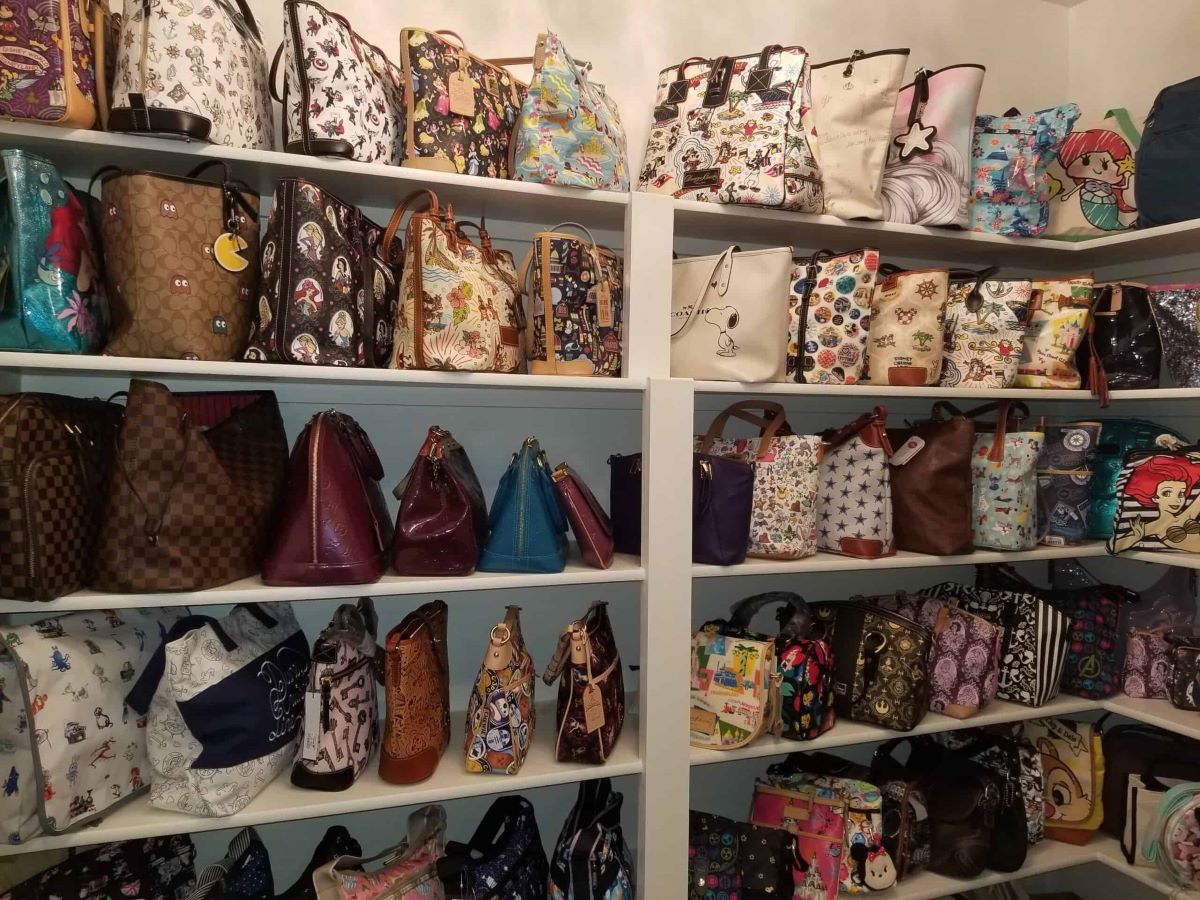

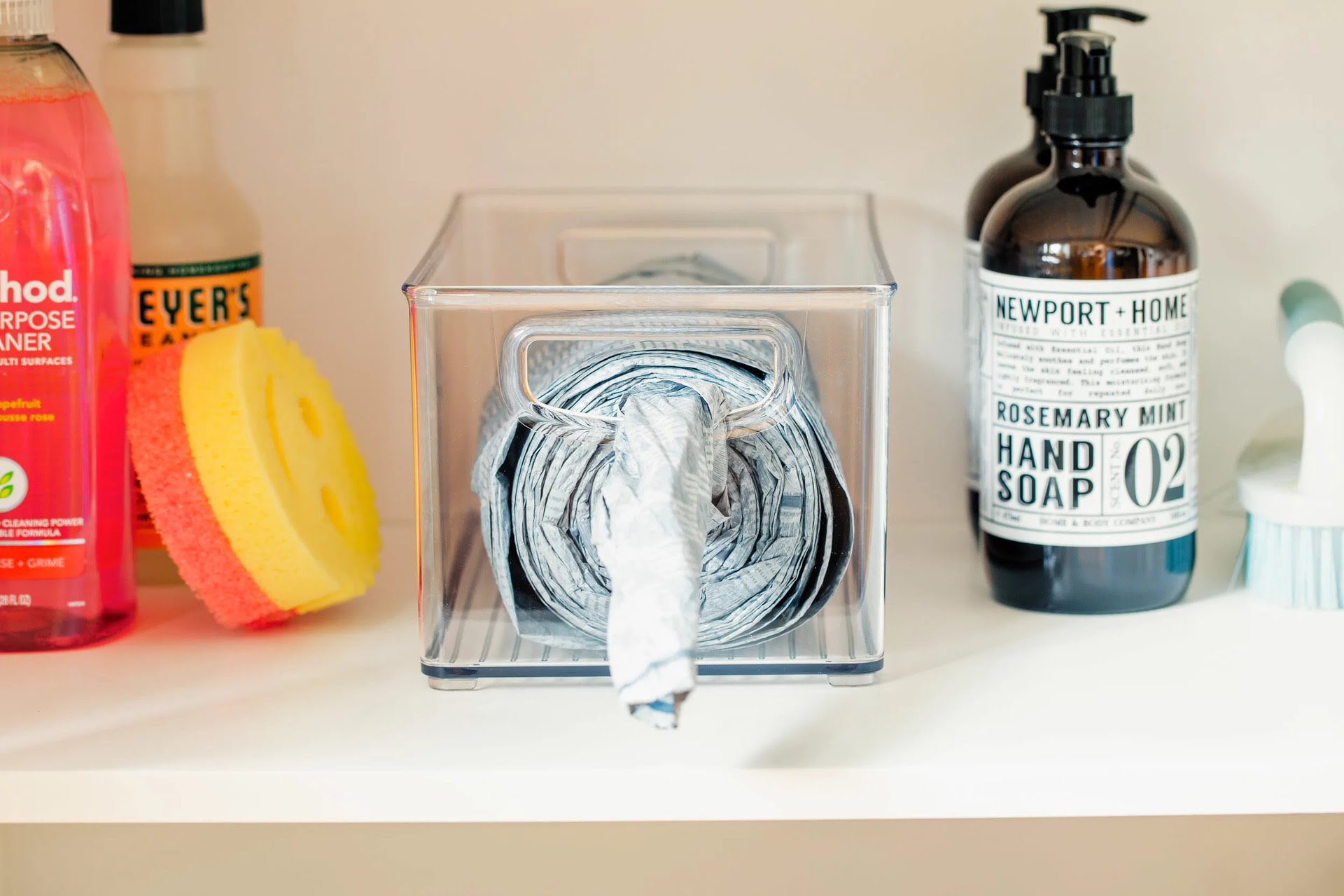

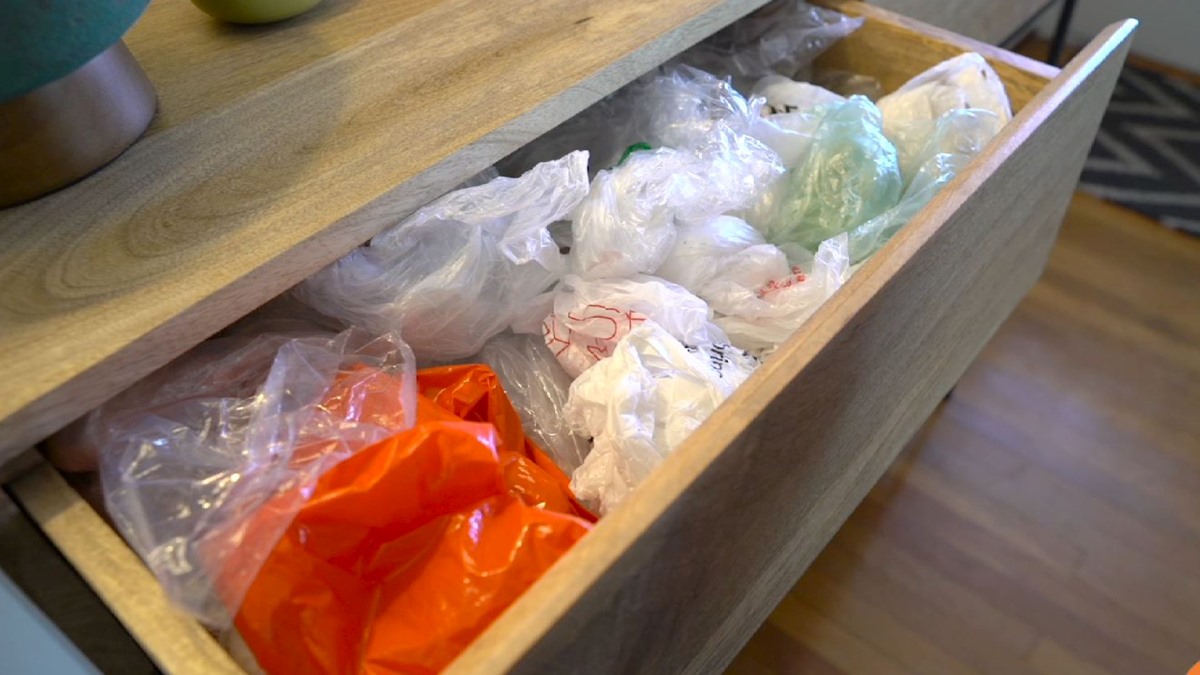
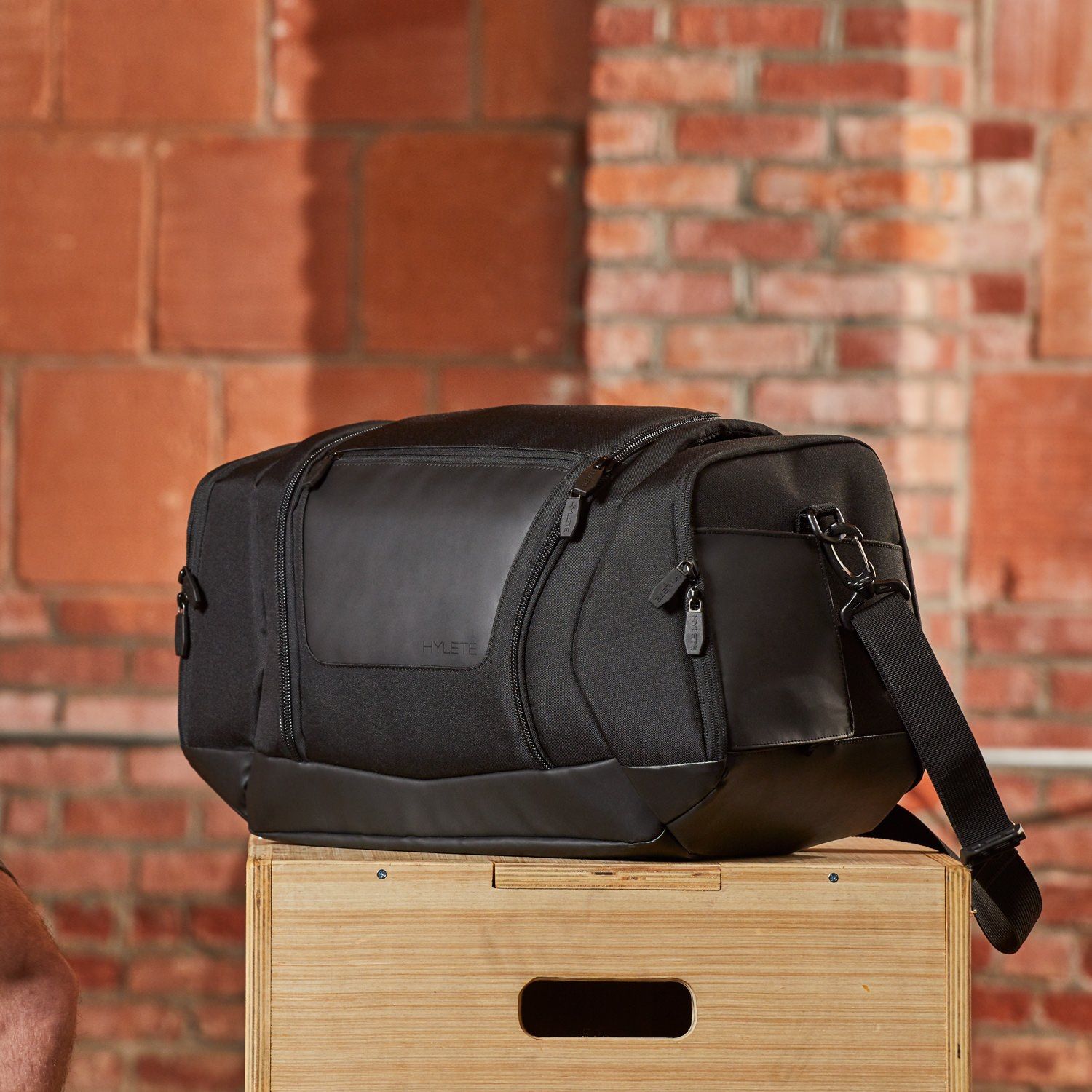


0 thoughts on “How To Store Bags And Purses”